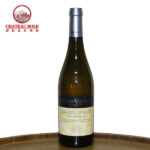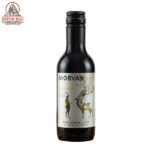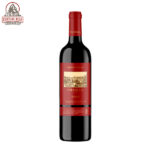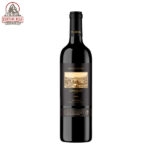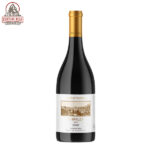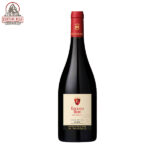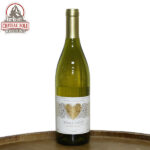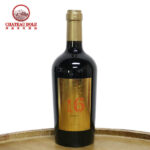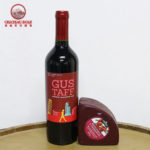Hunan Cuisine
Most tourists who visit China get to know the spicy red hot flavours of Sichuan cuisine since it is a tourist favourite. But in Hunan Province, the food is maybe even hotter. Their food tastes less numbing and sourer.
The sour and salty food flavours pair well with sweeter wines and lighter bodied medium dry wines.
Names: Hunan food, Xiang cuisine (湘菜 Xiāngcài /sshyang-tseye/)
Location: Hunan Province (southern central China) — Changsha, Zhangjiajie
Distinctives: spicy, favouring sautéing, stir-frying, steaming, and smoking.
The Flavours of Hunan Cuisine — Hot and Sour, and Salty
Eating Hunan food is fun. You’ll have a chance at trying your tongue on a new kind of cuisine. If you’ve experienced the burning numbness of Sichuan or Chongqing food, see how your body reacts to the vinegar/chilli mix of Hunan food.
The many different tastes of the food partly stems from an unusually wide variety of agricultural products. Several kinds of chilli peppers are grown. Citrus fruits are one of the major crops, and it lends the yummy sour flavour to dishes such as the popular Hunan Orange Chicken.
‘Chopped chilli’ (剁辣椒 duò làjiāo /dwor laa-jyaow/) is made from vinegar, chilli peppers, and salt. It is liberally applied in noodle soups and meat dishes to produce the sour, hot flavor they love.
Stimulate Your Appetite the Chinese Way
Hunan food is actually hotter than Sichuan food. The Sichuanese use pepper corn that numbs your mouth so the food all starts tasting the same. Instead, the Hunanese use vinegar with the pepper. It serves to stimulate the taste buds and make them tingle, so you can better perceive the wide range of flavours and the rich variety of ingredients and spices.
The numbing Sichuan food might give you a higher blood pressure/pulse rate so that you’ll need to drink something cold or go out for a walk to cool down. Hunan food does the opposite. Vinegar lowers blood pressure and cholesterol levels too. So it is good for those with high blood pressure.
Why Such Hot (and Sour) Food?
Common saying: 四川人不怕辣,湖南人辣不怕,贵州人怕不辣! (Sìchuānrén búpà là, Húnánrén là búpà, Guìzhōurén pà búlà!) It means: “Sichuan people don’t fear hot food, Hunan people don’t fear any degree of spiciness at all, and Guizhou people fear to eat food that isn’t spicy.”
Perhaps the wet hot summers and chilly wet winters drive the people to eat sour hot foods. The Chinese think that extra heat (yang) of peppers and other hot spices balances out the excessive cold and wet (yin).
Vinegar also packs yang, and along with helping with digestion, you’ll find that it helps cool your body on hot days. In traditional Chinese medicine, vinegar is used to help people be more comfortable in the heat of summer and stay healthy. It also kills parasites and bacteria that grow in hot weather.
Notable Features — Many Vegetables, Hot Seasonings, and Rice
Crunchy vegetables: Eating a wide variety of vegetables keeps them healthy as does their cooking method. They generally like to sauté with a little oil so it is still crunchy “al dente.” It preserves vitamins in food this way.
- Refreshing summertime vegetable: ‘Slapped cucumber’ (拍黄瓜 pai huanggua) is an appetizer of cold cucumbers served in garlic, dried chilli flakes, and vinegar. To prepare it, cucumbers are ‘slapped’ down to absorb the vinegar dressing.
Daily staple: The area is in the subtropical rice growing area of China, so white rice and rice noodles are the the main staple cereal foods. For example, mi fen (长沙米粉 mǐfěn) rice noodle soup is popular in Changsha.
Seasonings of Xiang Cuisine
Yang sources: They use hot peppers and green onions, shallots, garlic, ginger, spicy oil, duo la jiao and cassia cinnamon to provide the needed daily yang. Soy sauce and tea seed oil are also used in cooking.
Sweet foods: Honey is enjoyed in some dishes, and sugar is used in some dishes and candy. They like sweet food, but not as much as the Cantonese further south. Lotus seed candy is a local product.
Their Favourite Cooking Methods
Their cuisine is thought of as the melting pot of the larger regional cuisines around them. Their cooks use various ways to prepare food. They commonly boil soups or stews, stir-fry, sauté (炒香), bake, braise, smoke, pickle or ferment.
Fermentation: To store vegetables and meat for the winter or preserve it through the hot summers, Hunanese have traditionally eaten much pickled and fermented food. They pickle tofu by letting it sit for few weeks. It is then mixed with liquor, salt, star anise, and chilli and fermented in pickling jars for a month or more.
Showing 1–9 of 13 results



